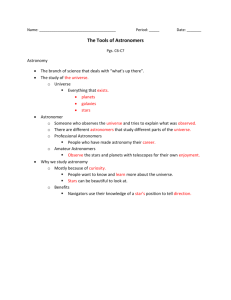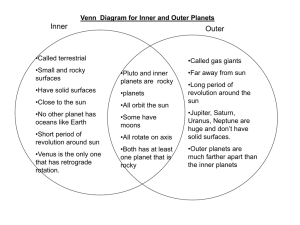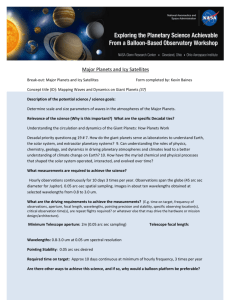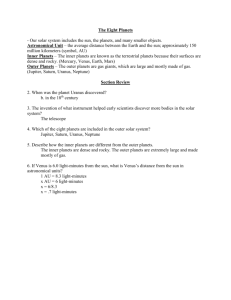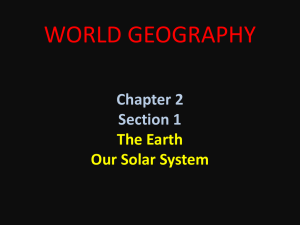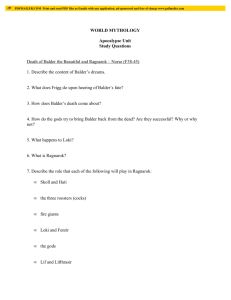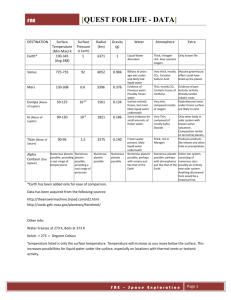Ancient Indian Astronomy
advertisement
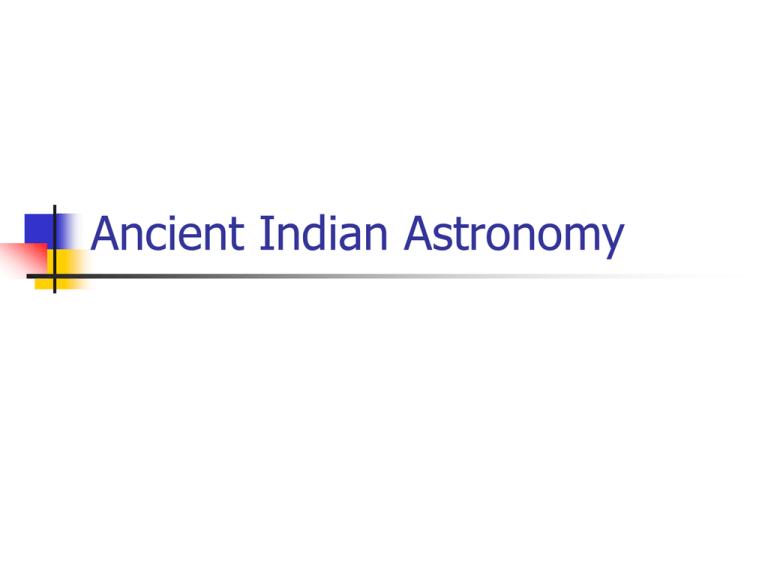
Ancient Indian Astronomy Hindu calendar Brahma lives 100 years (Brahman years, not human years) One Kalpa coincides with one Day of Brahma’s life. One Kalpa corresponds to 4,320,000,000 earthly years. Earthly time is divided into Yuga, or Ages which are: Krita ( or Satya ) Yuga Treta-Yuga Dwapara-Yuga Kali-Yuga 4,800 years 3,600 years 2,400 years 1,200 years Calendar For a total of 12,000 years. The four Yuga make one Mahayuga The 12,000 years must be multiplied by 360, the days of the human year 12,000 x 360 = 4,320,000 years Every Kalpa has 1000 cycles of four Yuga 4,320,000 x 1000 = 4,320,000,000 years Astronomers Varahamihira (~500CE) described the Earth as spherical and as being suspended in space Used latitude and longitude Described the stars as “fixed” and gave the planets a constant speed. Astronomers Aryabhata I (~500CE) Heliocentric (somewhat) idea 1000 years before Copernicus and Galileo Described methods of eclipse prediction. Codified many trigonometric laws. Sin tables Value of pi Knew of most of the planets (at least 7) without a telescope Astronomers Brahmagupta (~600CE) Estimated the Earth’s circumference as 5000 yojanas (yojana = 4.5 miles) Surprisingly accurate! (off by less than 10%) Devacharya (~600CE) First astronomer to describe a method for calculating the precession of the eqinoxes The Planets Hindu astronomers used epicycles (like Ptolemy) to describe the motion of the planets in a geocentric solar system. Aditya – the Sun Epicycles are necessary to account for retrograde motion. Son of Aditi (the unchangeable) Soma – the Moon Peace, gentleness The Planets Budha – Mercury Shukra – Venus Burning coal Brihaspati – Jupiter Refined, sensual Ankgaraka – Mars Intellect Great protector Shani – Saturn Slow Interesting Notes Hindu texts speak of Pravaha, a celestial wind, the force that moves the planets. There is a famous Sanskrit saying when translated means, “In all directions, Sun, Sun, Sun.” Seems to be suggesting that all the stars are suns, just further away Olbers’ paradox long before Olbers! Invasion! With the invasion of the Moghuls, astronomy in India did not advance for some time. Think of what might have been achieved Controversy Throughout history some scholars have been determined to prove that these ideas and theories could not have originated in India 19th century notion that India did not have observational astronomy. Controversy More than 30 years ago, Roger Billard analyzed ancient calculations which were to predict the position of planets Compared to modern theory, they were surprisingly accurate! Aryabhata’s constants are more accurate than the West’s at that time Not this advanced in Babylonia Cannot be from Babylonia!



